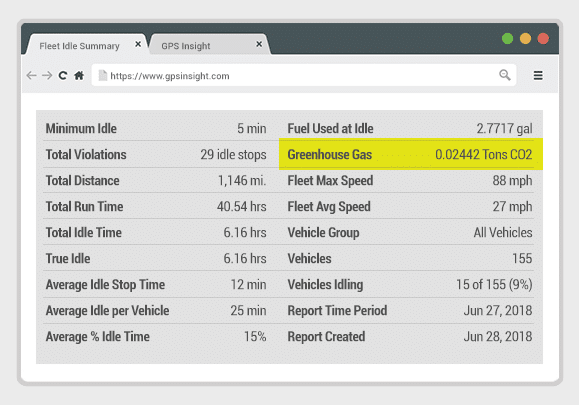Go Green with GPS Tracking
Are you currently looking for ways to implement your green initiative in your fleet of vehicles? If you are worried about your carbon footprint or have a corporate “Go Green” campaign, GPS tracking will support you in your efforts.
Lowering Green House Gas (GHG) emissions is the best way to achieve and maintain a green fleet. GHG emissions are calculated based on a vehicle’s C02 emissions rate, vehicle runtime, and fuel type.
GPS tracking reports can provide you with detailed information about your fleet’s GHG emissions so that you can reduce your carbon footprint. Below is a sample GPS tracking report that provides fleet idle data to include GHG levels of each vehicle during a specific time and date range:

You will notice that this report mainly focuses on vehicles idling where they are in park with the engine running. High idling is one of the main indicators of not just fuel costs, but high GHG emissions as well.
How Businesses Use GHG Data
A copper mining customer, Kennecott Utah Copper, began to monitor their idling and GHG emissions with GPS Insight and was eventually nominated for an Environmental Protection Agency (EPA) award for how drastically they brought their GHG emissions down. Learn how they also reduced and saved over one million dollars in fuel costs.
Along with monitoring GHG data, fleets can improve their eco-friendly efforts in other ways with GPS tracking.
Stay on top of fleet maintenance for cleaner running vehicles and assets
Take shorter routes to job sites to reduce miles driven
Right-size the fleet to eliminate underutilized vehicles and their environmental impact
Monitor driver behavior to reduce idling, speeding, and other behaviors that increase fuel use
Environmentalism is becoming increasingly important in the United States, and businesses with fleets of vehicles and powered assets need to be particularly conscious of their sustainability. By incorporating GPS tracking to better manage fleet resources and environmental impact, organizations are able to run a cleaner, greener fleet.





